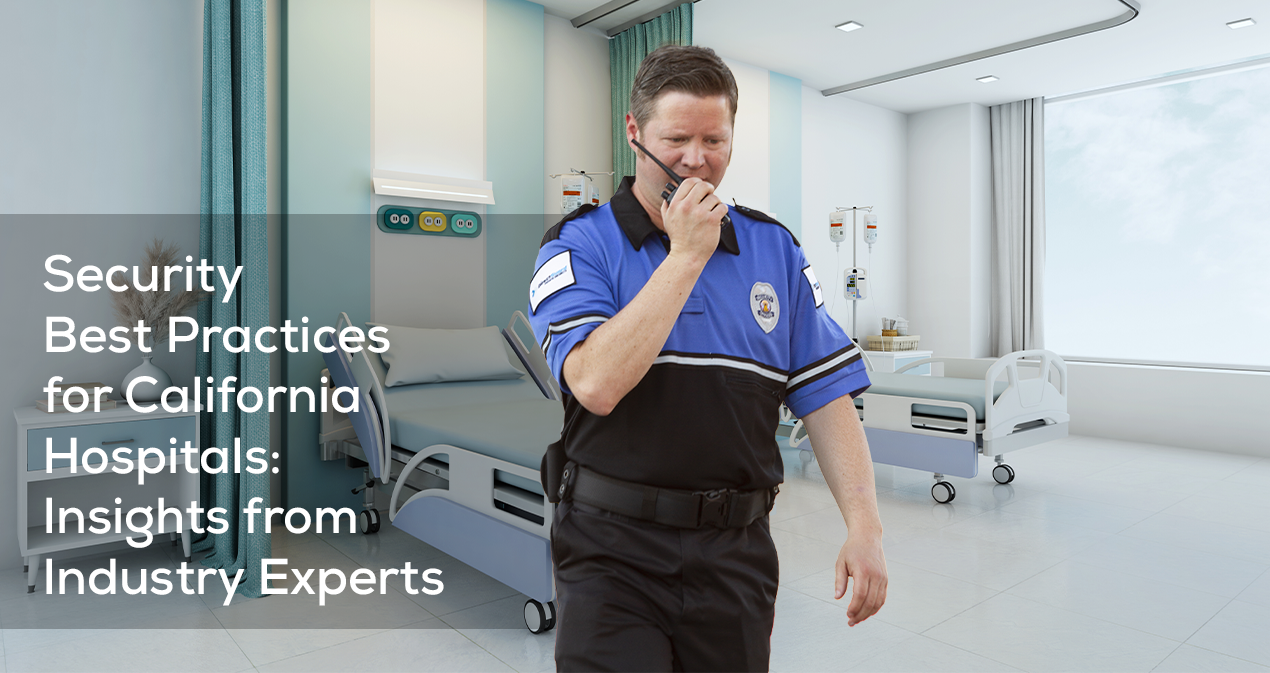- Armed Fire watch security guards
- Unarmed Fire watch security guards
- Commercial Firewatch security
- Shopping centers security services
- Residential security service
- Construction Site Security
- Financial Security
- Fire watch security guards
- Private Firewatch security
- Medical facilities security services
- Patrol Fire watch security guards
Security Best Practices for California Hospitals: Insights from Industry Experts

In today’s digital age, cybersecurity is of paramount importance for organizations across all industries, and healthcare institutions, including hospitals, are no exception. California hospitals, dealing with sensitive patient information and critical medical data, face unique challenges when it comes to safeguarding their systems and networks. This article delves into the security best practices that California hospitals should adopt to protect their assets, patients, and reputation, based on insights from industry experts.
Understanding the Cybersecurity Landscape
1. The Growing Threat of Cyber Attacks in Healthcare
The healthcare sector has witnessed a surge in cyberattacks in recent years. Malicious actors target hospitals due to the potential value of the data they hold, including personal and financial information. Ransomware attacks have become increasingly common, causing disruption and putting patients’ lives at risk.
2. Compliance and Legal Requirements
California hospitals are subject to various laws and regulations concerning patient data protection. Compliance with the Health Insurance Portability and Accountability Act (HIPAA) and the California Consumer Privacy Act (CCPA) is essential to avoid hefty fines and legal consequences.
Securing Hospital Networks and Systems
3. Implementing Robust Firewalls and Intrusion Detection Systems
A strong network firewall acts as the first line of defense against unauthorized access to hospital networks. Intrusion Detection Systems (IDS) monitor and detect suspicious activities, providing real-time alerts for swift action.
4. Conducting Regular Vulnerability Assessments
Periodic vulnerability assessments help identify weaknesses in the hospital’s infrastructure, applications, and devices. By addressing these vulnerabilities promptly, hospitals can prevent potential breaches.
5. Enforcing Strong Access Controls
Controlling access to sensitive data is critical. Implementing multi-factor authentication for employees and limiting access privileges based on job roles can significantly reduce the risk of unauthorized access.
6. Regular Security Training for Staff
Human error is one of the leading causes of data breaches. Conducting regular security awareness training for hospital staff can help them recognize and respond to potential threats effectively.
Protecting Patient Data
7. Encryption of Data at Rest and in Transit
All patient data should be encrypted both when stored on servers and when transmitted between systems. Encryption ensures that even if data is intercepted, it remains unreadable and unusable.
8. Backing Up Data Regularly
Regular data backups are crucial to mitigate the impact of potential ransomware attacks. Hospitals must maintain secure backups to restore critical systems and data in case of a cyber incident.
9. Secure Mobile Device Management
With the increasing use of mobile devices in healthcare, hospitals must implement secure mobile device management policies. This includes ensuring devices are encrypted, remotely wipeable, and have access restrictions.
Incident Response and Recovery
10. Developing a Comprehensive Incident Response Plan
Having a well-defined incident response plan helps hospitals respond swiftly and effectively to cyber incidents. This plan should include protocols for reporting, containing, and recovering from a security breach.
11. Regular Testing of Incident Response Plan
Regular testing and simulations of the incident response plan will ensure that hospital staff are familiar with the procedures, leading to a more coordinated and efficient response during actual emergencies.
Conclusion
The security landscape in the healthcare sector is continually evolving, and California hospitals must remain vigilant to safeguard their systems and patient data from cyber threats. By adopting robust cybersecurity measures, complying with relevant regulations, and prioritizing staff training, hospitals can stay ahead of potential risks and protect their patients’ well-being.
